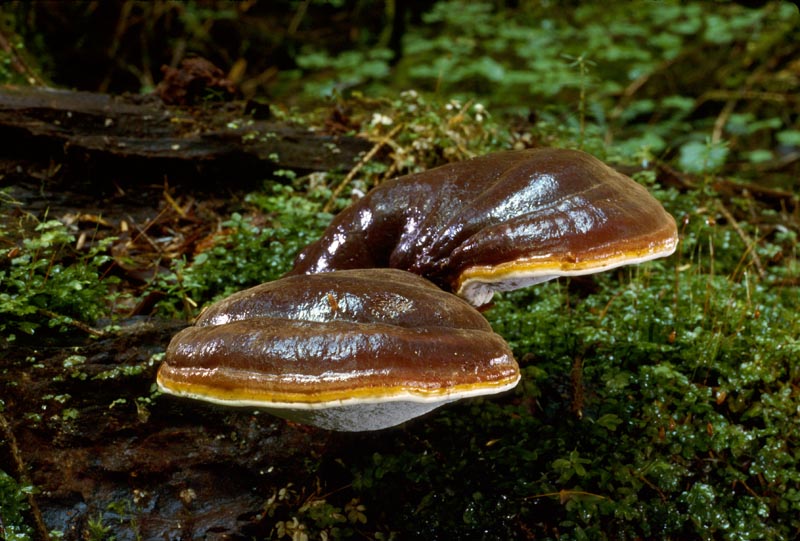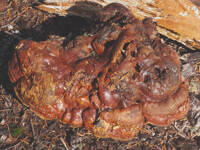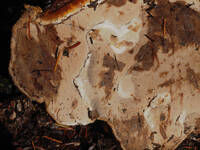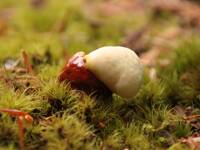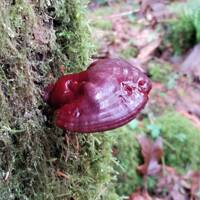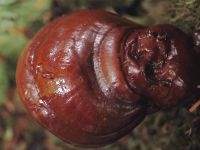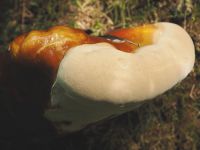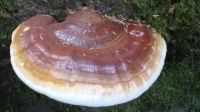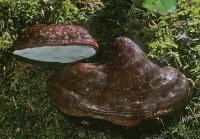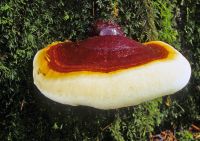Habitat: Occurs on conifers and hardwoods.
Conservation Status: Not of concern
The genus Ganoderma is best known for the medicinal fungus G. lucidum, commonly known as reishi or ling zhi, and G. applanatum, the artist’s conk, a common perennial species on conifers and hardwoods in our region. Ganoderma oregonense and G. tsugae are two annual species that are somewhat similar to G. lucidum, but differ from it in coloration and substrate. G. oregonense and G. tsugae are almost impossible to separate from each other. Both species typically develop a medium-sized to large, shiny, ochraceous to reddish brown or mahogany cap with a lateral stipe; less often, they develop multiple caps or grow shelf-like. In older specimens, the varnished crust often cracks extensively. The pore surface is cream-colored and turns brownish when bruised or upon drying. The flesh of the cap can be rather thick, and is soft fibrous and whitish. Both G. oregonense and G. tsugae cause a white-rot in conifers.
PNW Herbaria: Specimen records of Ganoderma oregonense in the Consortium of Pacific Northwest Herbaria database
CalPhotos: Ganoderma oregonense photos

